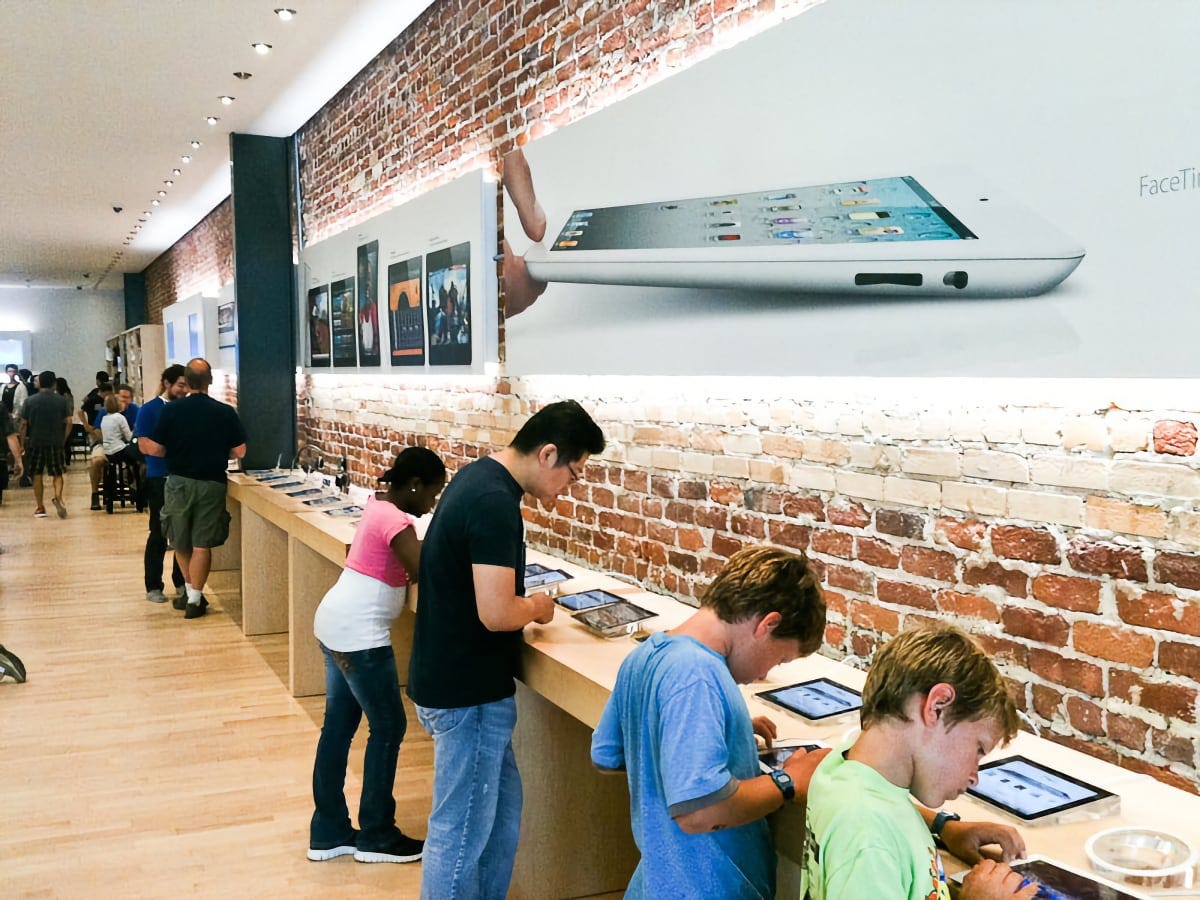Here’s August’s bonus article for paid subscribers. Your support makes Tabletops possible every week. Thank you.
You know the axiom: Apple products feel magical because of the tight integration between hardware, software, and services — making “the whole widget.” Apple wants to control every part of the experience from end to end. This is largely possible with iPhones and iPads because computers are sealed capsules of technology. They need only interface with the world through mediated sensors and networks. It’s not as clean-cut with architecture, where buildings must literally mesh with the environment. In many cases, an isolated structure is not even ideal.
This fundamental tension between control over the whole widget and respect for what came before is part of what makes Apple Store architecture so irresistibly fascinating. Just look at Apple Pasadena, built in a 1920s warehouse in the Old Pasadena Historic District.
Like many American downtowns, Old Pasadena faced a precipitous decline in the second half of the 20th century and became a hollow shell of its former self. The once vibrant West Colorado Boulevard filled in with seedy businesses and blighted properties and was eventually slated for demolition.
Apple’s future space at 54 West Colorado stood alone on a dusty sidewalk, its minty green stucco caked with grime. A COINS sign hung over one window and FOR LEASE over the other. Here’s a National Park Service gallery of the neighborhood from 1983 that includes another photo of Apple’s space. When Apple Stores began opening almost two decades later, Old Pasadena was coming alive again. This real estate listing shows the store shortly before renovation.
Apple preserved the structure’s decorative stucco and ironwork but added a second ornamental column on the right side of the entrance to make the facade symmetrical. Historic Apple Stores tend to be filled with little revisions like this that depict history as just a bit more perfect than it really was. An imagined past is not so different than a manufactured present.
Within the historic frame, Apple dropped in what was essentially a standard Apple Store for early 2003, complete with a now extinct double logo black entrance. The logos were removed during a renovation in 2006.
The store opened on January 7, 2003 at the unusual time of 6:00 P.M. I’ve only managed to locate one archived album from that evening shot by some Apple fans who were let off early from work to attend. Some of the more interesting photos are cobbled together from archive.org below.
By this time, Apple was beginning to realign the Theater as a feature exclusive to larger stores. Apple Pasadena was one of very few locations built with Eames Tandem Sling Seating in the Theater rather than wooden benches or the full upholstered Theater seats of stores like SoHo and North Michigan Avenue.

Those seats and the original interior lasted until April 18, 2011, when Apple temporarily moved two doors down to 42 West Colorado, a former Z Gallerie location. The original store was entirely boarded up early in construction, and later the windows were simply wrapped with vinyl. You can still see the renovations and temporary store on Google Street view if you step back in time to the October 2011 capture.
Gary Allen of ifoAppleStore dutifully documented the temporary location in Pasadena as he did with so many other store projects. His work continues to be the single most valuable record of early Apple Retail history, and I wish I could thank him for his efforts.

Gary’s photos show raw brick walls and wood floors juxtaposed against standard Apple Store tables and Graphic Panels. It’s an oddly satisfying look that doesn’t really feel temporary or unfinished at all. Also unique to this location were opposing window displays positioned perpendicular to the deeply recessed store entrance.

Apple reopened its original location on February 4, 2012 with an all-new stainless steel interior, a Briefing Room, and a Startup counter. The store is scheduled to reopen again tomorrow, August 2, 2023 after closing for renovations on May 22.
If you’d like to suggest a store for me to research for next month’s article or have a story to share, send me an email. You can view this post and the entire Tabletops archive on the web at any time here.






